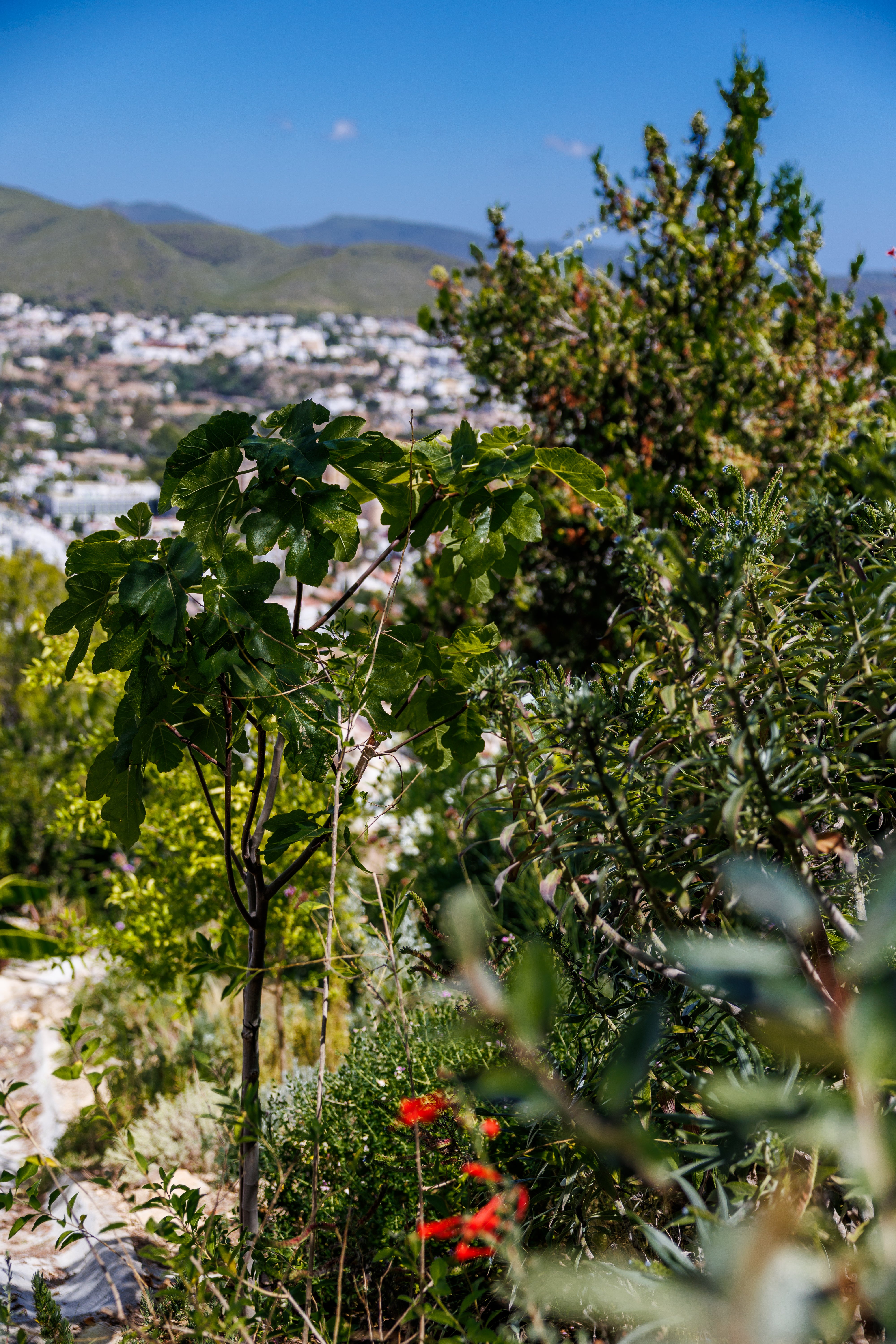
One of our methods
Permaculture
Every layer of a garden tells the story of resilience, diversity, and care for the future.
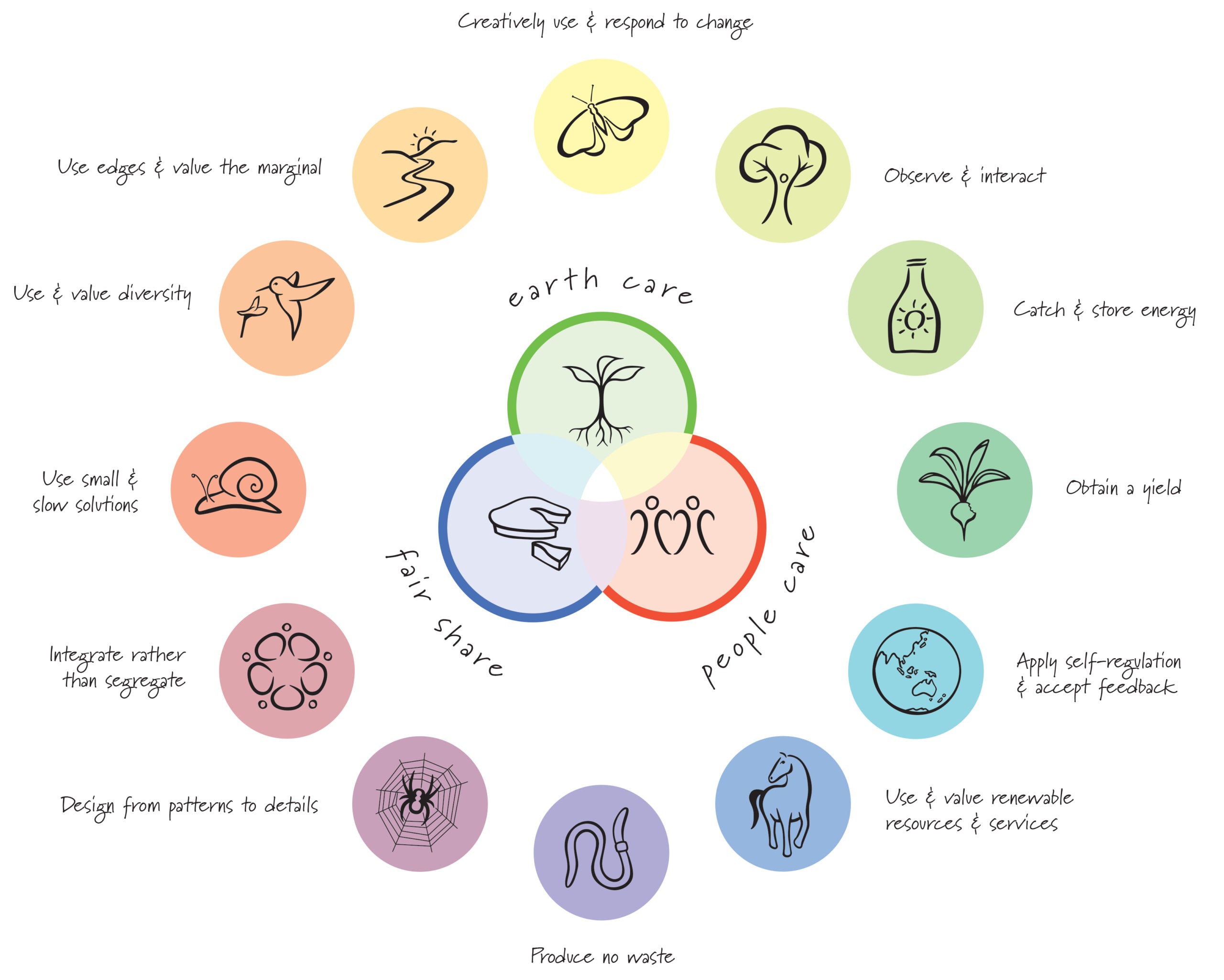
What is permaculture?
Permaculture is more than a gardening method, it is a design philosophy and way of thinking that takes inspiration from the intelligence of natural ecosystems. The word itself combines permanent and agriculture, and the goal is clear: to create systems that last, sustain themselves, and regenerate over time.
In a forest, no one waters the trees, sprays fertilizer, or pulls weeds, and yet it thrives in abundance. Permaculture asks: what can we learn from this? By studying how nature organizes itself, we design gardens and landscapes that are resilient, productive, and beautiful, without exhausting the land.
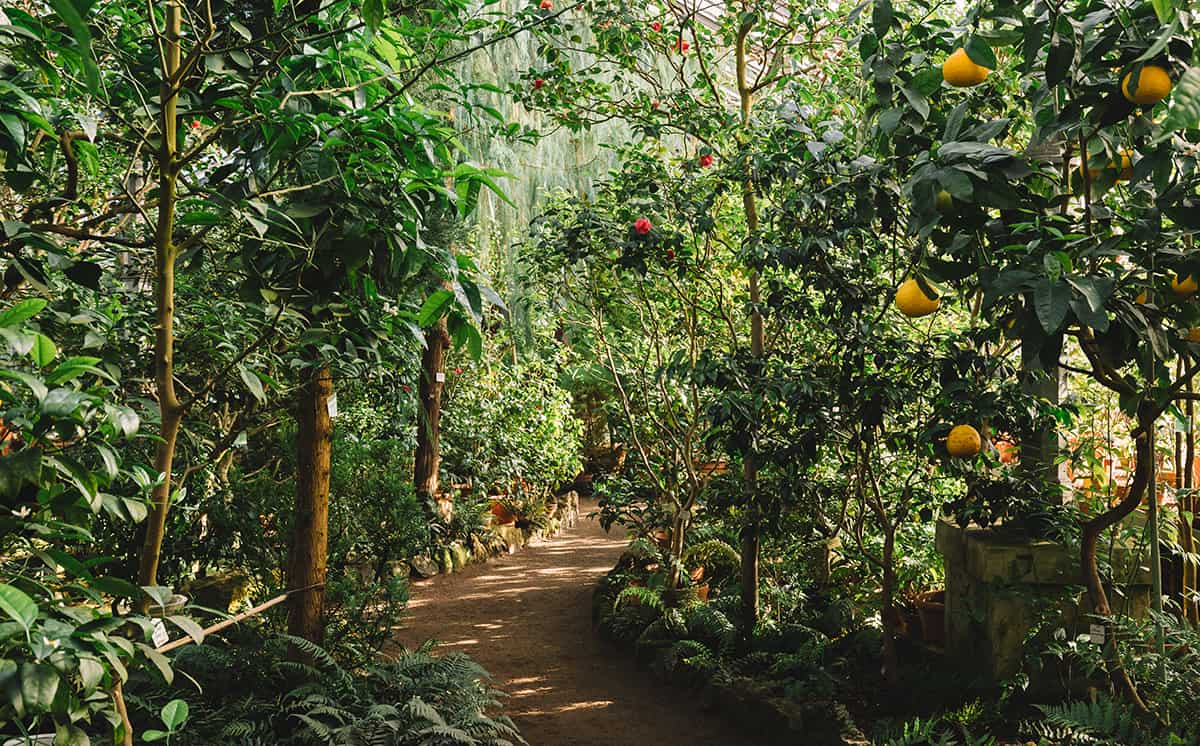
Forms of permaculture
- Food forests: Multi-layered gardens that mimic the structure of a natural forest, with fruit trees, shrubs, vines, herbs and groundcovers all working together.
- Charcoal: The use of biochar to enrich soil, improve water retention and store carbon, creating healthier and more fertile ground.
- Hügelkultur: Raised beds made from logs and organic matter that slowly decompose, providing long-term nutrients and moisture for the soil.
- Rainwater harvesting: Capturing and reusing rainwater through swales, ponds and storage systems, making gardens more resilient to drought.
- Vegetable gardens: Diverse and regenerative plantings that combine vegetables with herbs and flowers, improving soil health and supporting natural balance.
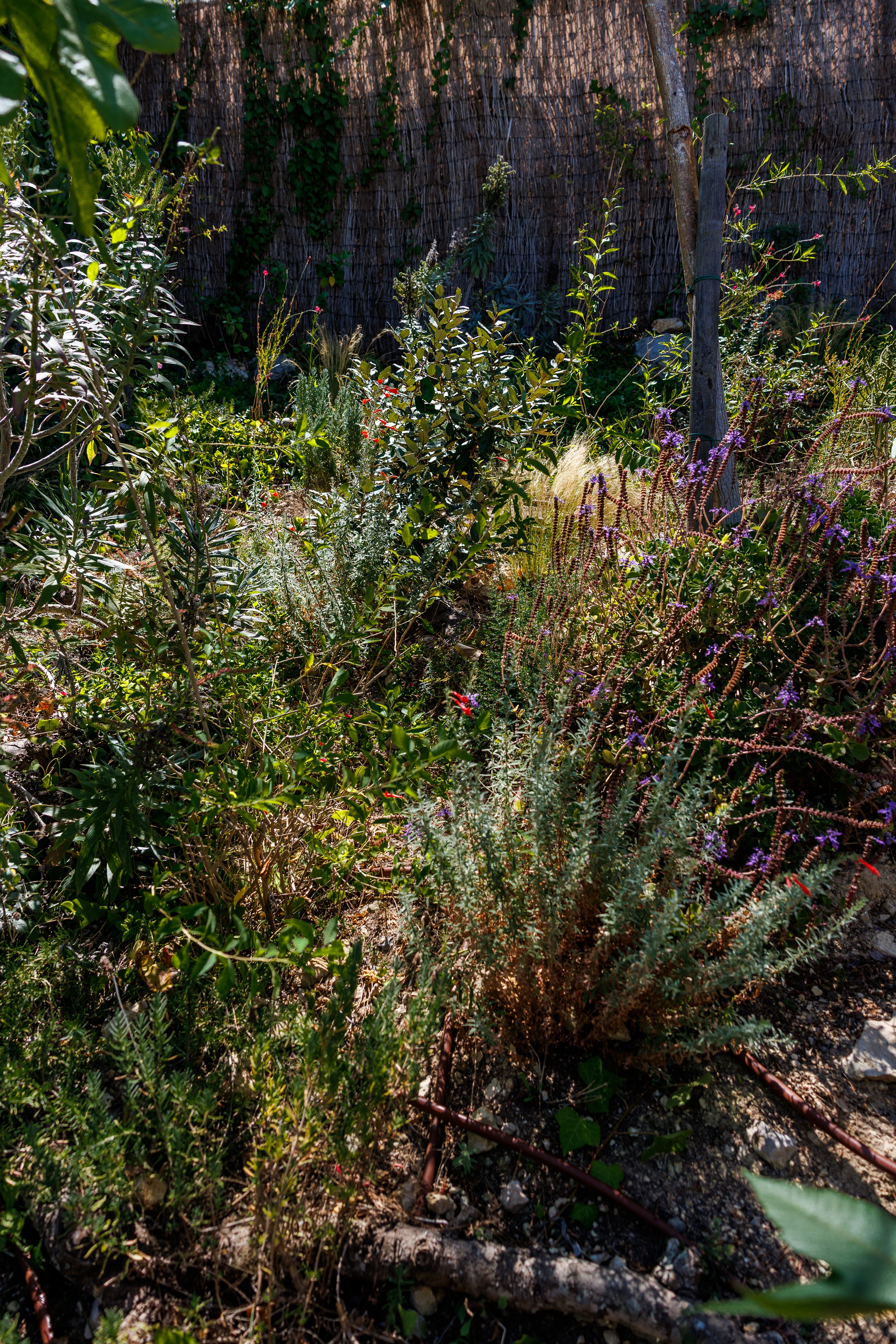
Rooted in the island
On Ibiza, this approach is especially valuable. The island faces hot summers, periods of drought and soils that are often poor in organic matter. By layering plants and regenerating soil naturally, permaculture gardens are more resistant to dry periods, require less irrigation, and still provide beauty and abundance. It is a way of working with the island’s rhythm, not against it.
Permaculture in our gardens
Permaculture is already an integral part of our approach. Below, we highlight three gardens where these principles are applied, and show how methods such as layered planting, soil regeneration, and biodiversity make the garden not only more beautiful, but also more resilient and self-sustaining.
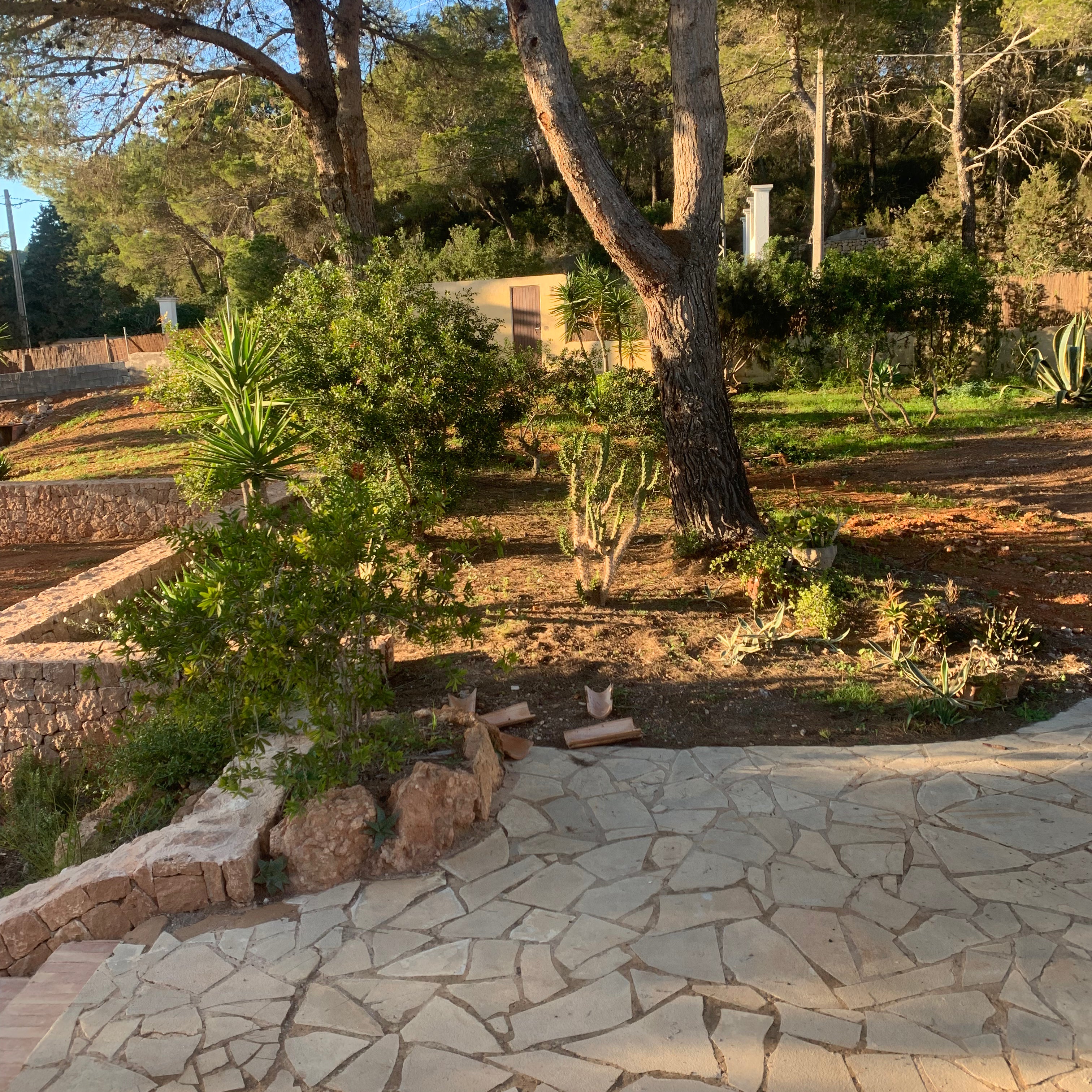
Cala Nova
In Cala Nova we are shaping one of our most ambitious projects: the creation of a food forest. Inspired by the principles of permaculture, this garden is designed to grow like a natural forest, with different layers of trees, shrubs, vines and groundcovers all supporting one another. Fast-growing pioneers provide shade and organic matter, while young fruit trees and perennials slowly establish the backbone of the garden.
The goal is not only to produce food, but also to regenerate soil, capture water, and create a resilient ecosystem that thrives in Ibiza’s dry climate. Even though the project is still in its early phase, the foundations are being laid for a landscape that will grow richer and more abundant with every season. The Cala Nova garden shows how permaculture can transform a garden into a living, self-sustaining system.
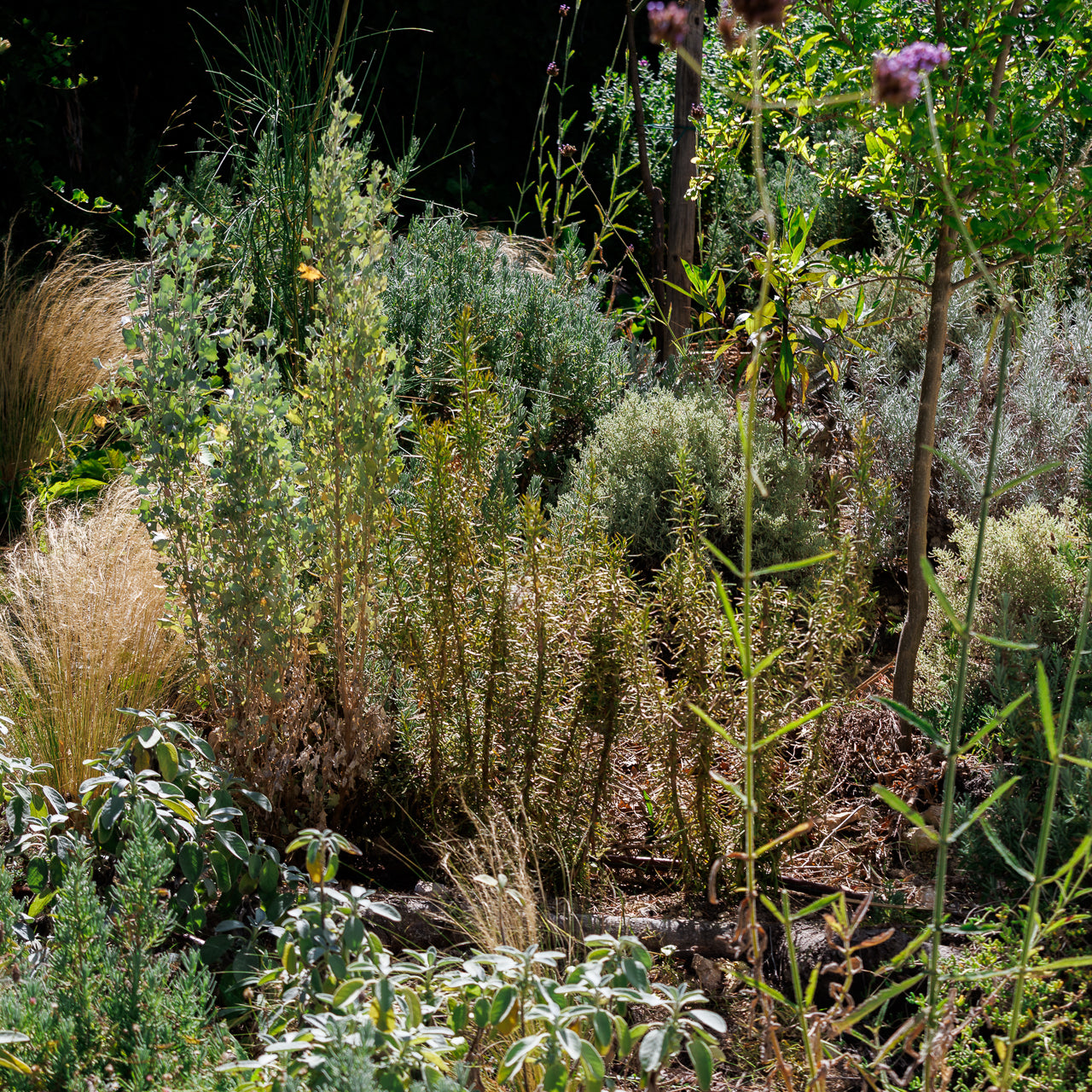
Aguas Blancas
At our garden in Aguas Blancas, the vegetable garden is more than just a place to grow seasonal produce, it is designed as a living example of permaculture in practice. Instead of working the soil with heavy inputs or monocultures, we follow nature’s patterns. Different vegetables are grown side by side with herbs and flowers that attract pollinators, repel pests and enrich the soil. Composting and mulching return organic matter to the earth, creating a fertile base that gets stronger every season.
This approach means the garden is not only productive, but also regenerative. By mimicking natural diversity and cycles, the vegetable garden supports itself while providing fresh food. It is a small-scale example of how permaculture transforms agriculture: by creating abundance through balance with the land.
